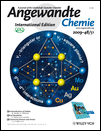Ca2+ Induces the Formation of Two Distinct Subpopulations of Group II Intron Molecules†
This work was supported by the Swiss National Science Foundation and the University of Zurich (R.K.O.S.), as well as by the NIH and the NSF (R01 GM085996 and MCB-0747285 to D.R.).
Graphical Abstract
New wrinkles in folding: In the folding of the D135 ribozyme derived from the group II intron Sc.ai5γ, partial replacement of Mg2+ with Ca2+ leads to a division into two distinct subpopulations that are not interchangeable. The picture shows the splitting into the two types together with the single-molecule FRET states.





